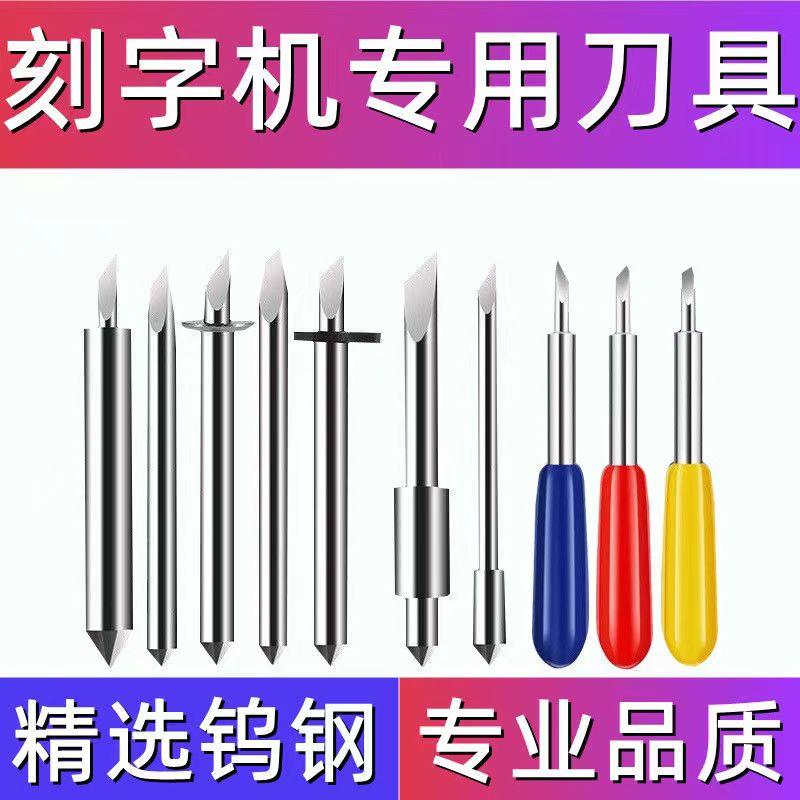Vinyl cutters are one of the essential business tools any person should have in their repertoire.
Meanwhile, one business sign can sell for up to $50. Vinyl sign cutting can provide a high return for relatively little setup.
Owning a vinyl cutter can put you on your way to owning a small business – provided you keep your vinyl cutting tool in good shape, of course.
It’s probably not something you immediately think about, but your tools need to stay maintained to keep your businesses running.
The most important part of the cutter is the plotter blade. Plotter blades are the part of the machine that shapes and separates the letters and shapes for signs.
Like any sharp edge, plotters blades can dull. You can take steps to maintain them properly, but eventually, you’ll have to get a replacement.
But how often do you have to get a replacement blade, and how can you take care of your current one?
Read on to learn a few plotter blade maintenance and replacement tips.
When Do You Need a New Plotter Blade?
There is no specific length of time a plotter blade lasts, but if you start experiencing issues cutting, you may need a replacement. The consensus is that your blade should be good for 500 to 1000 yards of cut vinyl.
This estimate can account for years of cutting, provided you’re cutting thinner vinyl and no other materials. Thicker sheets of vinyl will dull your blades much faster.
Metallic materials and reflective surfaces can dull blades even more rapidly. The sharp edges will wear down because they constantly grind against glass and metal.
How Can You Tell You Need a Replacement?
One indication of a dulled plotter blade is if you’re having trouble weeding your vinyl.
Weeding vinyl is when you remove the extra material from what you’ve already cut into a design for use.
Another way you can tell your blade is dull is if your cuts are visibly rough and ragged-looking. Sometimes the rough edges are apparent at a glance. Other times you may have to do a closer inspection.
If you have another blade, try it to ensure that the issue is simply a dulled blade. Once the material cuts, you can move on to your vinyl working.
Ongoing problems, however, may signify something else is wrong. Another potential problem with your cutter could be that you’re experiencing knife offset.
Knife offset happens when the blade isn’t in the exact position it needs to be to make neat, precise cuts.
The most obvious sign you need a replacement is damage to the blade itself. Visible chips and nicks in the edge signify you need a new blade.
When there is no visible damage, but you suspect it’s there, you can do the sharpietest. All you have to do is tap the blade against a sharpie tip; if the blade bites in, the edge is fine.
A sliding blade means that it’s time for a replacement.
Do You Have to Buy a Certain Brand of Blade?
There are various vinyl cutters on the market, and each of those cutters has its brand of blade.
The most important thing you have to be sure of is that the blade fits securely in the blade holder and the holder is the appropriate size for the cutter carriage.
Some vinyl cutter makers out there have started a trend towards changing this, however. Some newer manufacturers decided that they could sell more products by introducing interchangeability.
Other brands had to do the same if they wanted to stay in business. Check your cutter’s manufacturer’s guide if you’re unsure what kind of replacement blade you can buy.
What Can You Do to Maintain Your Blade?
One handy tip to keep in mind is not to cut too deeply. Paper isn’t all that great for any sharp edge’s long-term lifespan. The paper backing on your vinyl can dull the blade overtime.
Your blade may dull much faster if you’re making your cuts too deeply into the vinyl paper release liners.
Another thing to be careful of is that the blade isn’t extended too far out of the holder. Super extended blades can cut too far into the release liner.
A blade extended too far out from its holder will dull quicker than one that’s not. The best way to tell if your blade is installed well is if you can see and feel the sharp edge poking from the holder.
The edge should barely be visible to the naked eye. If you’re having issues seeing the blade, you did the installation well.
To double-check your blade placement, run the blade holder across a piece of vinyl. You can cut whatever design you want. Just be sure that the liner doesn’t show the pattern you made when you flip the material over.Visible or tangible lines mean that the blade is still too ex
Vinyl Cutter Blades,Plotter Cutting Blades
PREV : Tekcel Tooling-Knives & Accessories NEXT : Jwei Aol Ruk Hty Aoke Ruizhou Smitte Jindex Iecho Vinyl Cutter Knife Blade Holder






